Photos: Winschoten in the Netherlands
Yes, I know you’re waiting for the Birmingham photos, but those will have to wait a bit longer. In the meantime, here are some photos of Winschoten in the Netherlands, taken during a visit on October 3.
Now October 3 is a public holiday in Germany, namely the Day of German Unity. It is, however, a regular work day in the Netherlands. As a result, many Germans living close to the border use the public holiday for a shopping trip to the Netherlands. On Dutch public holidays such as Konigsdag, our Dutch neighbours make the opposite trip and flood German border towns. And indeed every second person on the streets of Winschoten was German.
However, the reason I went to Winschoten was because I had a business appointment. The fact that it was a public holiday in Germany and a work day in the Netherlands was just a lucky coincidence. As for why Winschoten, it was simply the closest town that had a branch of the respective business, since Winschoten is located only about 15 kilometers behind the Dutch-German border, a one and a half hour drive from Bremen.
In my lifetime, border controls on the Dutch-German border were always light and most of the time, the customs and border officers would wave you right through. Young people were more likely to be stopped, particularly somewhat scruffy looking young people in big cars, because the border officers suspected they might be smuggling drugs.
However, since the Schengen Agreement went into force, border controls are a thing of the past in the European Union (except for the UK and Ireland who refuse to join, since their citizens apparently enjoy queuing up at the airport to have their passports scanned). As a result, the old border control checkpoint on the highway A280/A7 has been transformed to a coffee shop (the sort that sells coffee, not other stimulants*). The border is only denoted by a sign. On the way back, we crossed the border on a country road, because there was a traffic jam on the highway. The border station on the Dutch side lay abandoned, the one on the German side had been torn down altogether.
What still exists, however, is the last gas station before the border. There is always a gas station just behind the border, allowing drivers to take advantage of lower gas prices before crossing the borders. In the 1980s, gas was cheaper in the Netherlands. Nowadays, it’s cheaper in Germany. In the Netherlands, the last gas station also used to be the last place to get LPG autogas (ubiquitous in the Netherlands and very uncommon in Germany), though in recent years German gas stations near the border have begun offering LPG autogas as well.
Walking through the town centre of Winschoten, I was surprised how many retail chains I remember from my teens in Rotterdam are still around. There was a HEMA discount department store, the household good chains Blokker and Xenos, the healthfood and drugstore chain Kruidvat (albeit with a new logo), the clothing chains Miss Etam and MS Mode (their clothes are still boring as well), the clothing discounter Zeeman and the bookstore chain Bruna. Considering how many long established retail chains have been lost in Germany in the past twenty-five years, I find it comforting to see so many familiar names on a Dutch high street.
I resisted the lure of Blokker and Xenos (“You don’t need any of this.”) as well as HEMA (“You don’t need to buy cheap costume jewellery anymore – you can actually afford the good stuff.”), but I couldn’t resist the Bruna bookstore. Alas, this one didn’t have any English language books, unlike my old Bruna store in Rotterdam. It did have comics, including some of my old favourites like Franka, Suske en Wiske, Blake en Mortimer, Thorgal or Largo Winch. In the end I resisted buying any, though I can actually afford them now (as a teen, I just read them in the store, because I didn’t have enough money to buy comics). But I’m happy to see them still going strong after all those years.
In the end, the only thing I bought was two bags of rice crackers, because I love rice crackers. At least, you can actually get rice crackers in Germany these days, but the selection is still better in the Netherlands.
So let’s have some photos:

Let’s start with a Dutch cliché and have a drawbridge in the mist.
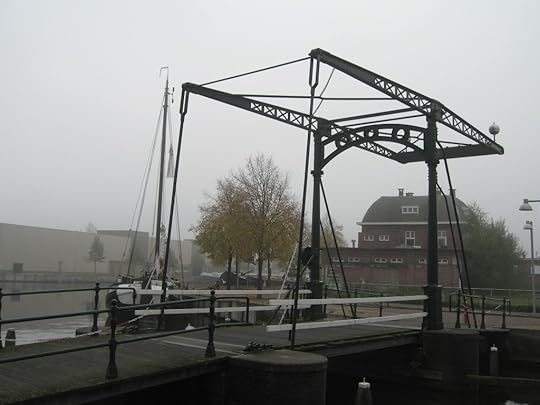
The drawbridge seen from another angle with a sailing boat in the background.
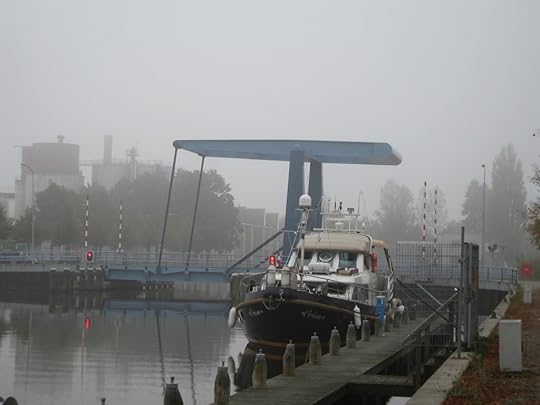
Another more modern drawbridge and a river boat.
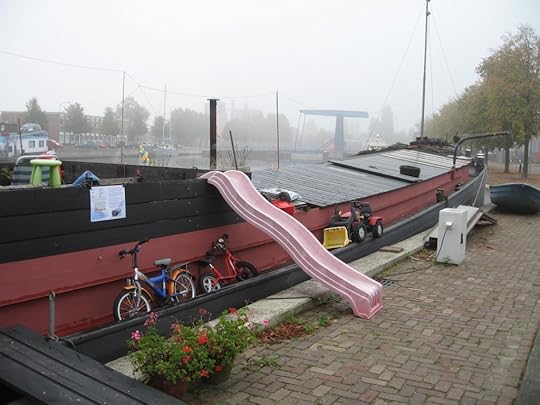
Motorized freight barges like this one are a common sight on German and Dutch rivers and canals. Sometimes, whole families live on these barges, such here, where a moored barge has been transformed into an impromptu playground for the skipper’s kids.
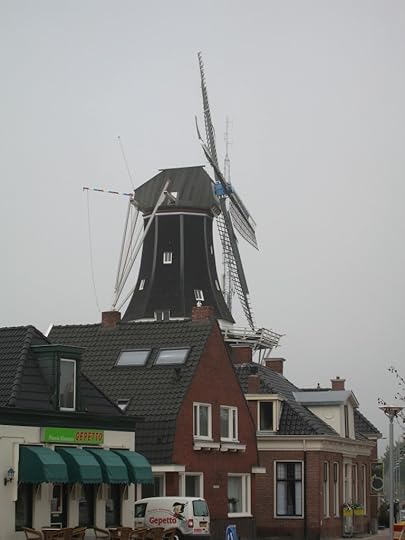
Dutch cliché No. 2, a windmill. Winschoten once had 13 windmills, now only three remain. This one is the Edens windmill, built in 1763, which makes it the oldest windmill in the entire province of Groningen.
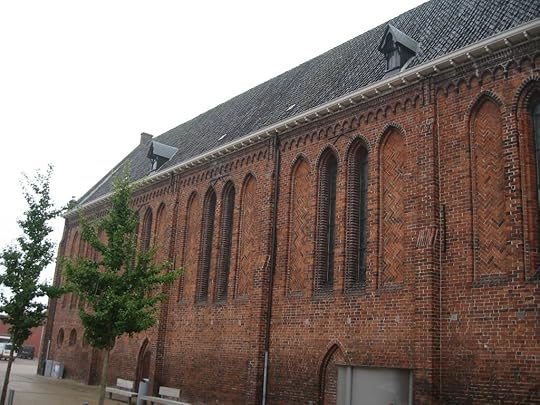
The Romanesque-Gothic Marktpleinkerk (market place church) was originally built in the 13th century. Initially Roman Catholic, it’s nowadays a Dutch Reformed church, which explains the rather plain interior.
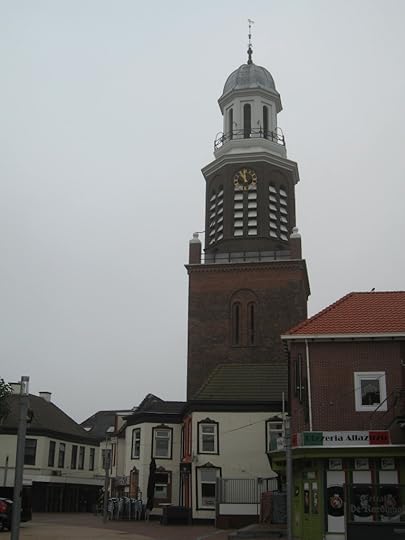
The 16th century bell tower of the Marktpleinkerk stands separately from the main church.
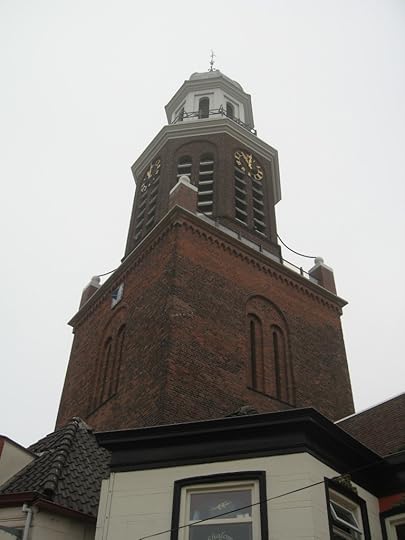
Another look at the bell tower of the Marktplein church.
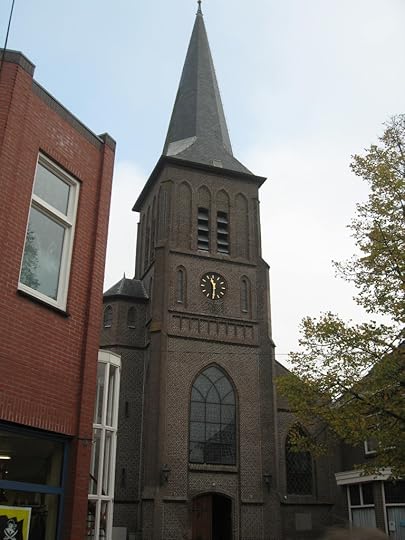
The Roman Catholic St. Vitus Church, built in 1880. The Marktplainkerk was also dedicated to St. Vitus in pre-Reformation days and the new Roman Catholic church maintained that tradition.
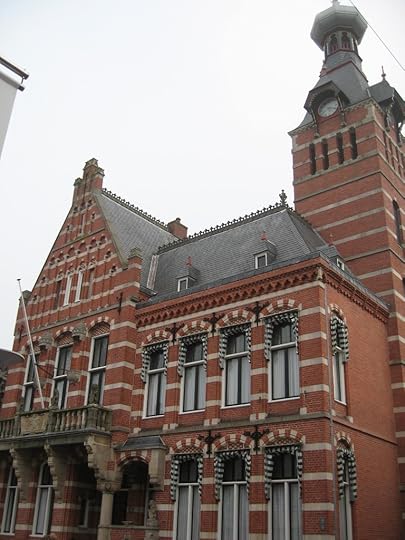
The old townhall of Winschoten, built in 1895.
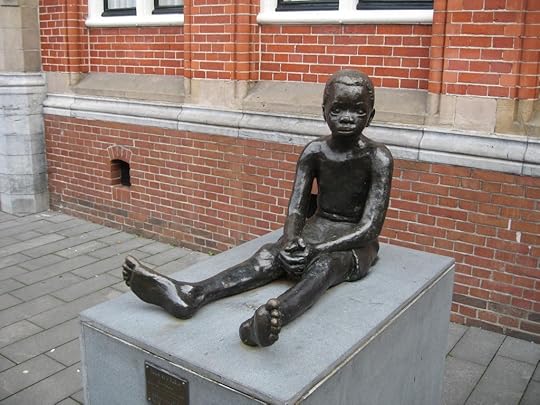
This bronze statue of a cute little boy in front of Winschoten’s townhall is called “Son of Toela”.
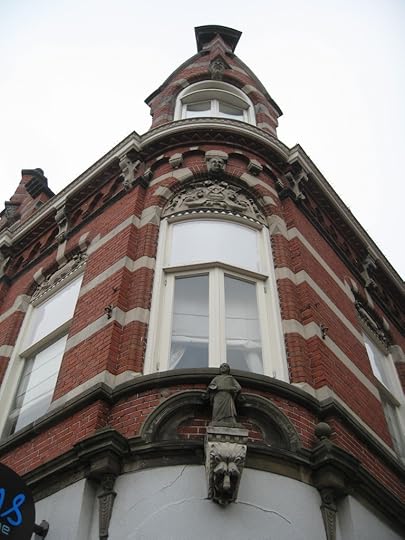
A striking 19th century corner house on Winschoten’s main shopping street. Note the monk statuette and the masonic imagery.
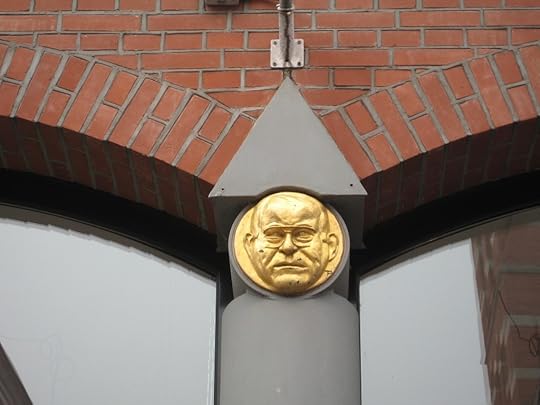
This striking gilded modern day gargoyle adorns a building on Winschoten’s main shopping street. Alas, I have no idea who the gentleman depicted is.
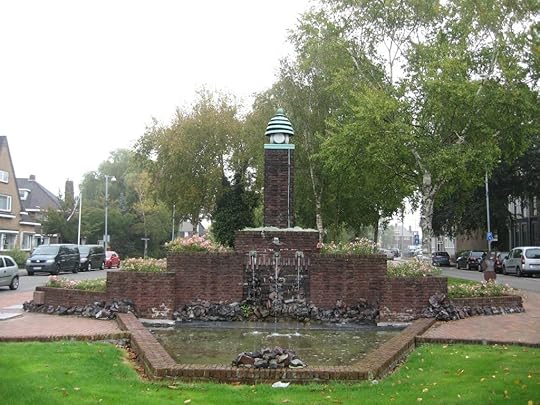
This beautiful fountain was dedicated by Mayor Schönfeld in 1931. Mayor Schönfeld must have left his mark on the town, since there were also several streets named after him.
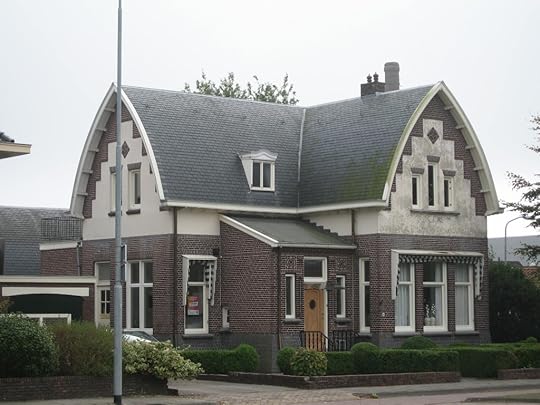
Dutch houses have a rather unique look. Here is one example, probably dating from the 1920s.

Another typical Dutch house in Winschoten. Note the fountain in the garden.
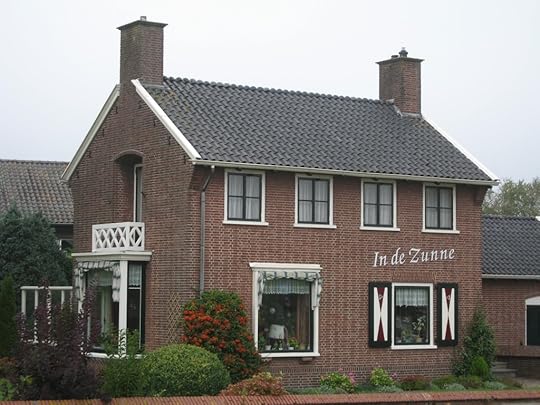
And yet another typical Dutch house. This one even has a name “In the sun”. Note the colourful shutters.
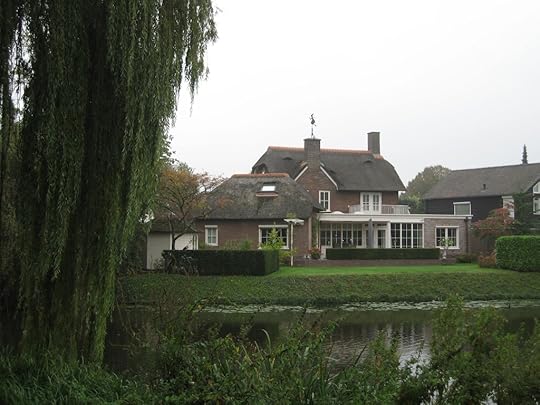
A beautiful house with a thatched roof (very common in North Germany and the Netherlands) and a unique windvane.
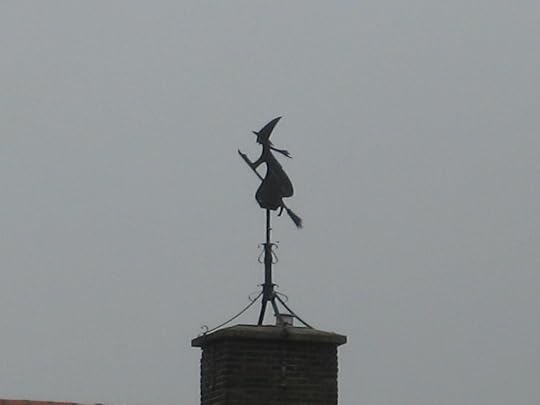
A closer look at the wind vane from the previous photo. Yes, it’s a witch on a broomstick and just in time for Halloween, too.

Somewhat cruder Halloween critters for sale on the market of Winschoten.
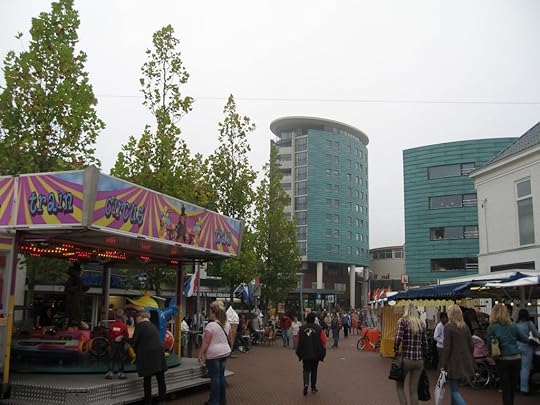
A carousel and some market stands at what was billed as the “Festival of the Region”. The modern building in the background is the Winkelcentrum (shopping center) ‘t Rond (the round).
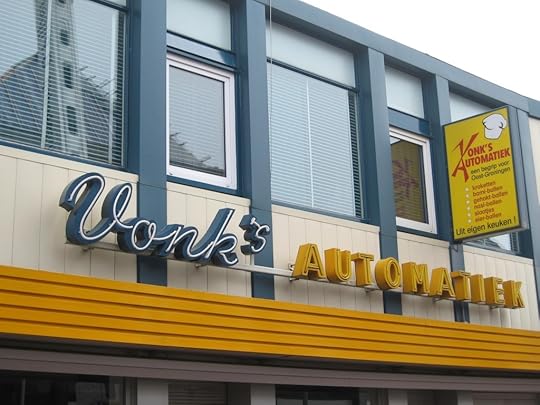
And here is a real blast from the past, a 1950s Automat restaurant called “Vonk’s Automatiek”. According to the sign, it’s an institution in East Groningen.
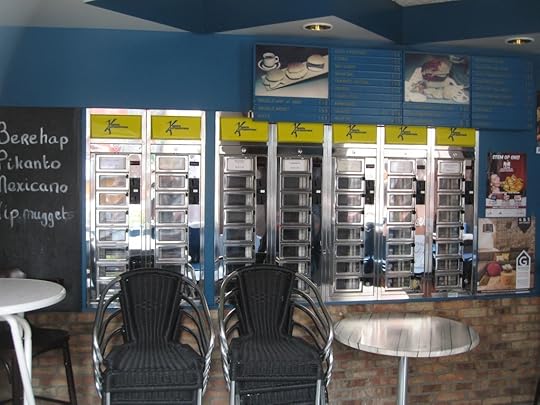
A look inside Vonk’s Automatiek. Doesn’t it look just like a set from Mad Men?
The Netherlands is one of the few places in the world where the good old Automat restaurant still manages to hang on, long after it died off elsewhere. Though I don’t recall ever having been inside one during my teen years in Rotterdam.
*I spent a lot of time in the Netherlands as a teen, because my Dad worked in Rotterdam. And since I was a teen girl in the big city, I often prowled the streets of Rotterdam and hung out in bookshops, reading comics. I couldn’t help but notice the many dodgy looking coffee shops, only that I thought they were really just selling coffee and wondered who on Earth would go into such dodgy and dirty looking places, when there were so many nicer and cleaner cafés around. In retrospect, it’s probably better that I didn’t know, because if I had known, I’d probably have refused to walk past the coffee shops for fear of accidentally breathing in drug fumes.
 Send to Kindle
Send to Kindle
Cora Buhlert's Blog
- Cora Buhlert's profile
- 14 followers



